Opinion & Analysis
Scoring Practice: How I took my success on the range to the course

This is what typically happens with me. I hit an extra large bucket on the range and I am fairly consistent and feel confident. I put in 30 minutes chipping and 30 minutes putting. I think, “I’ve got this!” Then I go out on the course and make 7 pars, a birdie, 3 triples and two doubles on simple par 3s.
What happened? Why did great practice not translate to consistent play on the golf course? The problem is that my practice sessions consist of one club that I hit many times in a row, called “blocked practice.” I also discount the first worm-burner or occasional duck-hook to not being “warmed up.”
When I warm up, I typically move through my bag sequentially, ensuring after a dozen or so shots that I am satisfied with my ability with each club. Next, I go to the putting green, and before I know it, I’m lipping out 50-foot putts and draining 8-footers from every angle. Feeling like the Champions Tour is probably Google-searching me, I go to the chipping area, where 30 minutes later, Mickelson would be impressed. I am SO ready! I confidently walk to the first tee, and on the second hole I barely hole that 3-footer for a triple bogey.
After a round like that, I started to think about how an actual round of golf works. I make a couple of practice swings, then have one chance, with one ball, to execute a good shot with one club. I then walk for 4 or 5 minutes, decide how far I need to hit the ball, select a club, take a couple of practice swings, and again have one chance with one club and one time to hit a good shot. A few minutes later, one chance at a pitch, then one chance to lag putt, then (hopefully) one chance at a short putt. Now I’m on the second tee box. I last hit my driver about 15 minutes ago, and perhaps the image of a big slice is burned into my memory. I take two practice swings, then have one chance, with one ball to hit a good shot.
Think about the less common shots. A green-side bunker, or the flop shot, or the long, uphill bump-and-run. You might have just a few of those in a four-hour round of golf. You still only have one chance with one ball to make a decent shot, but you haven’t done it in hours or days. The point is, I realized I tend to practice totally differently than I play, then wonder why I was not able to score… or can score on half the holes in a round of golf, but not the other half. I have reasonable consistency, but I can’t seem to take it out to the course and post a better score. “How can I be more effective,” I wondered.
Five years ago, I played golf with a friend that had been playing a couple of months at Torrey Pines. He almost beat me the first time we played, and I’ve played for decades! I was shocked, and determined to improve. I started downloading golf apps, but I was frustrated with all of them because they were so cumbersome to use. I found that I was focusing on using the app, not my golf game, and playing more slowly as a result. Therefore I decided to design and built my own app. In ended up calling it 80BREAKR, and I wanted it to have the best scorecard as the core, as well as an integrated game improvement mode modeled after spreadsheets I developed trying to improve with my friend at Torrey Pines.
Since my app has an easy way to track the quality of my shots on the golf course, it is equally effective on the range. Using this feature in my app, an idea came to me that I call Scoring Practice. It’s not very fast, and I get some strange looks at the practice area, but it is extremely effective. I go to the range, and after warming up like I would for a regular round of golf, I pretend to play a round of golf. I use an iPad and an app, but it works fine with a piece of paper and a pencil. I pick my most frequently played golf course, and pretend I’m walking around that particular course. When I start, I imagine I’m on the first tee and do my normal routine. I imagine the fairway, pick markers on the range that are trouble left, sand traps right, etc., and then play the shot.
I carefully note how far I hit that shot and if it lands in the fairway, left, right, and project what kind of shot and distance I needed next. I characterize shots as Good, OK, or Bad, and enter how far from the hole I would estimate I am for my next shot.
Here’s how I last played that hole in Scoring Practice. After my “drive,” I picked up my clubs and walked to the far edge of the driving range. The first shot was in the fairway (per the markers I picked before the tee shot), so I estimated I needed an 8 iron to the green. I took out my 8 iron and selected the size of the green with features or markers on the driving range. I took my practice swings, and then I hit one 8 iron shot noting if it was “on the green,” and if not, how far off the green the shot ended up. Then, I picked up my clubs and range balls and walked to the chipping area. I dropped one ball about as far away from the green as I imagined I was after my 8-iron shot. Next, I placed it for the kind of shot I would be facing on the imaginary course. For instance, I imagined I missed the green right, which has an uphill pitch to a close pin location. Therefore, I selected the wedge I would normally take, selected my landing spot, took a couple of practice swings, and hit one shot, one time to that pin, noting how far from the pin the ball ended up.
Now, I was on the green of that imagined first hole for this Scoring Practice round of golf. I took out my putter and walked to the practice putting green and set the ball down as far away and on as similar of a slope as possible for the result of the previous pitch. I did my normal ball-marking routine, set up, practice stroke, and then hit the putt. If I missed, I would finish putting as if this were actually the first hole on my favorite course, and I would record each shot and characterize if they were Good, OK, or Bad.
One hole was completed on my imaginary round. Next, I picked up my clubs and range balls and walked back to one side of the driving range. I then imagined the look of hole No. 2, and picked targets again for trouble left, right, and continued in this manner. I recorded the quality of every shot, and I made my way around the imaginary first nine holes of my favorite course this way one shot at a time.
It goes faster than a normal round, and sometimes I’ll leave the bag at the middle of the practice facility and just grab a new club and put the previous one back in on my way by.
So how did Scoring Practice work for me? The reason I came up with this idea was that every time I got to the fourth hole at a local course, it would typically be the first 7 iron of the round (or week). Routinely, I would pull this shot into the hazard left, top it into the stream in front of the tee and get a big score. It occurred to me that my 7-iron practice of hitting 30 in a row was completely different than having one chance on the par-3 fourth.
Shown above is an imaginary round played using Scoring Practice for the same course. Identical results! I knew I was on to something. I did scoring practice for this course two more days in a row, and then on the third day I actually played the first few holes late in the afternoon. I hit a decent 7 iron on the third hole! Why does this work? From this Golf Digest article, apparently there’s science behind the idea of “random” practice. Although this isn’t exactly random, it does focus your brain on changing shots at the same pace as on the golf course.
What are the other benefits I found from Scoring Practice? Very interesting things started to happen while practicing. All of a sudden, I was facing “real” situations, like a 10-foot birdie putt at the range with only one chance to make it. I was facing what felt like a real 4-foot, par-saving putt, and trying to recover from a poor bump and run. I realized I was actually practicing scoring situations, practicing my pre-shot routine, practicing reading putts, practicing alignment, and actually making a difference in my game!
- LIKE105
- LEGIT12
- WOW4
- LOL2
- IDHT1
- FLOP4
- OB3
- SHANK83
19th Hole
Vincenzi’s 2024 Zurich Classic of New Orleans betting preview

The PGA TOUR heads to New Orleans to play the 2023 Zurich Classic of New Orleans. In a welcome change from the usual stroke play, the Zurich Classic is a team event. On Thursday and Saturday, the teams play best ball, and on Friday and Sunday the teams play alternate shot.
TPC Louisiana is a par 72 that measures 7,425 yards. The course features some short par 4s and plenty of water and bunkers, which makes for a lot of exciting risk/reward scenarios for competitors. Pete Dye designed the course in 2004 specifically for the Zurich Classic, although the event didn’t make its debut until 2007 because of Hurricane Katrina.
Coming off of the Masters and a signature event in consecutive weeks, the field this week is a step down, and understandably so. Many of the world’s top players will be using this time to rest after a busy stretch.
However, there are some interesting teams this season with some stars making surprise appearances in the team event. Some notable teams include Patrick Cantlay and Xander Schauffele, Rory McIlroy and Shane Lowry, Collin Morikawa and Kurt Kitayama, Will Zalatoris and Sahith Theegala as well as a few Canadian teams, Nick Taylor and Adam Hadwin and Taylor Pendrith and Corey Conners.
Past Winners at TPC Louisiana
- 2023: Riley/Hardy (-30)
- 2022: Cantlay/Schauffele (-29)
- 2021: Leishman/Smith (-20)
- 2019: Palmer/Rahm (-26)
- 2018: Horschel/Piercy (-22)
- 2017: Blixt/Smith (-27)
2024 Zurich Classic of New Orleans Picks
Tom Hoge/Maverick McNealy +2500 (DraftKings)
Tom Hoge is coming off of a solid T18 finish at the RBC Heritage and finished T13 at last year’s Zurich Classic alongside Harris English.
This season, Hoge is having one of his best years on Tour in terms of Strokes Gained: Approach. In his last 24 rounds, the only player to top him on the category is Scottie Scheffler. Hoge has been solid on Pete Dye designs, ranking 28th in the field over his past 36 rounds.
McNealy is also having a solid season. He’s finished T6 at the Waste Management Phoenix Open and T9 at the PLAYERS Championship. He recently started working with world renowned swing coach, Butch Harmon, and its seemingly paid dividends in 2024.
Keith Mitchell/Joel Dahmen +4000 (DraftKings)
Keith Mitchell is having a fantastic season, finishing in the top-20 of five of his past seven starts on Tour. Most recently, Mitchell finished T14 at the Valero Texas Open and gained a whopping 6.0 strokes off the tee. He finished 6th at last year’s Zurich Classic.
Joel Dahmen is having a resurgent year and has been dialed in with his irons. He also has a T11 finish at the PLAYERS Championship at TPC Sawgrass which is another Pete Dye track. With Mitchell’s length and Dahmen’s ability to put it close with his short irons, the Mitchell/Dahmen combination will be dangerous this week.
Taylor Moore/Matt NeSmith +6500 (DraftKings)
Taylor Moore has quickly developed into one of the more consistent players on Tour. He’s finished in the top-20 in three of his past four starts, including a very impressive showing at The Masters, finishing T20. He’s also finished T4 at this event in consecutive seasons alongside Matt NeSmith.
NeSmith isn’t having a great 2024, but has seemed to elevate his game in this format. He finished T26 at Pete Dye’s TPC Sawgrass, which gives the 30-year-old something to build off of. NeSmith is also a great putter on Bermudagrass, which could help elevate Moore’s ball striking prowess.
- LIKE8
- LEGIT3
- WOW1
- LOL1
- IDHT0
- FLOP3
- OB1
- SHANK2
19th Hole
Vincenzi’s 2024 LIV Adelaide betting preview: Cam Smith ready for big week down under

After having four of the top twelve players on the leaderboard at The Masters, LIV Golf is set for their fifth event of the season: LIV Adelaide.
For both LIV fans and golf fans in Australia, LIV Adelaide is one of the most anticipated events of the year. With 35,000 people expected to attend each day of the tournament, the Grange Golf Club will be crawling with fans who are passionate about the sport of golf. The 12th hole, better known as “the watering hole”, is sure to have the rowdiest of the fans cheering after a long day of drinking some Leishman Lager.
The Grange Golf Club is a par-72 that measures 6,946 yards. The course features minimal resistance, as golfers went extremely low last season. In 2023, Talor Gooch shot consecutive rounds of 62 on Thursday and Friday, giving himself a gigantic cushion heading into championship Sunday. Things got tight for a while, but in the end, the Oklahoma State product was able to hold off The Crushers’ Anirban Lahiri for a three-shot victory.
The Four Aces won the team competition with the Range Goats finishing second.
*All Images Courtesy of LIV Golf*
Past Winners at LIV Adelaide
- 2023: Talor Gooch (-19)
Stat Leaders Through LIV Miami
Green in Regulation
- Richard Bland
- Jon Rahm
- Paul Casey
Fairways Hit
- Abraham Ancer
- Graeme McDowell
- Henrik Stenson
Driving Distance
- Bryson DeChambeau
- Joaquin Niemann
- Dean Burmester
Putting
- Cameron Smith
- Louis Oosthuizen
- Matt Jones
2024 LIV Adelaide Picks
Cameron Smith +1400 (DraftKings)
When I pulled up the odds for LIV Adelaide, I was more than a little surprised to see multiple golfers listed ahead of Cameron Smith on the betting board. A few starts ago, Cam finished runner-up at LIV Hong Kong, which is a golf course that absolutely suits his eye. Augusta National in another course that Smith could roll out of bed and finish in the top-ten at, and he did so two weeks ago at The Masters, finishing T6.
At Augusta, he gained strokes on the field on approach, off the tee (slightly), and of course, around the green and putting. Smith able to get in the mix at a major championship despite coming into the week feeling under the weather tells me that his game is once again rounding into form.
The Grange Golf Club is another course that undoubtedly suits the Australian. Smith is obviously incredibly comfortable playing in front of the Aussie faithful and has won three Australian PGA Championship’s. The course is very short and will allow Smith to play conservative off the tee, mitigating his most glaring weakness. With birdies available all over the golf course, there’s a chance the event turns into a putting contest, and there’s no one on the planet I’d rather have in one of those than Cam Smith.

Louis Oosthuizen +2200 (DraftKings)
Louis Oosthuizen has simply been one of the best players on LIV in the 2024 seas0n. The South African has finished in the top-10 on the LIV leaderboard in three of his five starts, with his best coming in Jeddah, where he finished T2. Perhaps more impressively, Oosthuizen finished T7 at LIV Miami, which took place at Doral’s “Blue Monster”, an absolutely massive golf course. Given that Louis is on the shorter side in terms of distance off the tee, his ability to play well in Miami shows how dialed he is with the irons this season.
In addition to the LIV finishes, Oosthuizen won back-to-back starts on the DP World Tour in December at the Alfred Dunhill Championship and the Mauritus Open. He also finished runner-up at the end of February in the International Series Oman. The 41-year-old has been one of the most consistent performers of 2024, regardless of tour.
For the season, Louis ranks 4th on LIV in birdies made, T9 in fairways hit and first in putting. He ranks 32nd in driving distance, but that won’t be an issue at this short course. Last season, he finished T11 at the event, but was in decent position going into the final round but fell back after shooting 70 while the rest of the field went low. This season, Oosthuizen comes into the event in peak form, and the course should be a perfect fit for his smooth swing and hot putter this week.

- LIKE13
- LEGIT3
- WOW1
- LOL1
- IDHT0
- FLOP1
- OB1
- SHANK1
Opinion & Analysis
The Wedge Guy: What really makes a wedge work? Part 1

Of all the clubs in our bags, wedges are almost always the simplest in construction and, therefore, the easiest to analyze what might make one work differently from another if you know what to look for.
Wedges are a lot less mysterious than drivers, of course, as the major brands are working with a lot of “pixie dust” inside these modern marvels. That’s carrying over more to irons now, with so many new models featuring internal multi-material technologies, and almost all of them having a “badge” or insert in the back to allow more complex graphics while hiding the actual distribution of mass.
But when it comes to wedges, most on the market today are still single pieces of molded steel, either cast or forged into that shape. So, if you look closely at where the mass is distributed, it’s pretty clear how that wedge is going to perform.
To start, because of their wider soles, the majority of the mass of almost any wedge is along the bottom third of the clubhead. So, the best wedge shots are always those hit between the 2nd and 5th grooves so that more mass is directly behind that impact. Elite tour professionals practice incessantly to learn to do that consistently, wearing out a spot about the size of a penny right there. If impact moves higher than that, the face is dramatically thinner, so smash factor is compromised significantly, which reduces the overall distance the ball will fly.
Every one of us, tour players included, knows that maddening shot that we feel a bit high on the face and it doesn’t go anywhere, it’s not your fault.
If your wedges show a wear pattern the size of a silver dollar, and centered above the 3rd or 4th groove, you are not getting anywhere near the same performance from shot to shot. Robot testing proves impact even two to three grooves higher in the face can cause distance loss of up to 35 to 55 feet with modern ‘tour design’ wedges.
In addition, as impact moves above the center of mass, the golf club principle of gear effect causes the ball to fly higher with less spin. Think of modern drivers for a minute. The “holy grail” of driving is high launch and low spin, and the driver engineers are pulling out all stops to get the mass as low in the clubhead as possible to optimize this combination.
Where is all the mass in your wedges? Low. So, disregarding the higher lofts, wedges “want” to launch the ball high with low spin – exactly the opposite of what good wedge play requires penetrating ball flight with high spin.
While almost all major brand wedges have begun putting a tiny bit more thickness in the top portion of the clubhead, conventional and modern ‘tour design’ wedges perform pretty much like they always have. Elite players learn to hit those crisp, spinny penetrating wedge shots by spending lots of practice time learning to consistently make contact low in the face.
So, what about grooves and face texture?
Grooves on any club can only do so much, and no one has any material advantage here. The USGA tightly defines what we manufacturers can do with grooves and face texture, and modern manufacturing techniques allow all of us to push those limits ever closer. And we all do. End of story.
Then there’s the topic of bounce and grinds, the most complex and confusing part of the wedge formula. Many top brands offer a complex array of sole configurations, all of them admittedly specialized to a particular kind of lie or turf conditions, and/or a particular divot pattern.
But if you don’t play the same turf all the time, and make the same size divot on every swing, how would you ever figure this out?
The only way is to take any wedge you are considering and play it a few rounds, hitting all the shots you face and observing the results. There’s simply no other way.
So, hopefully this will inspire a lively conversation in our comments section, and I’ll chime in to answer any questions you might have.
And next week, I’ll dive into the rest of the wedge formula. Yes, shafts, grips and specifications are essential, too.
- LIKE34
- LEGIT7
- WOW1
- LOL1
- IDHT2
- FLOP3
- OB1
- SHANK3
-

 19th Hole2 weeks ago
19th Hole2 weeks agoDave Portnoy places monstrous outright bet for the 2024 Masters
-

 19th Hole5 days ago
19th Hole5 days agoJustin Thomas on the equipment choice of Scottie Scheffler that he thinks is ‘weird’
-

 19th Hole3 weeks ago
19th Hole3 weeks agoTiger Woods arrives at 2024 Masters equipped with a putter that may surprise you
-

 19th Hole5 days ago
19th Hole5 days ago‘Absolutely crazy’ – Major champ lays into Patrick Cantlay over his decision on final hole of RBC Heritage
-

 19th Hole2 weeks ago
19th Hole2 weeks agoTwo star names reportedly blanked Jon Rahm all week at the Masters
-

 19th Hole2 weeks ago
19th Hole2 weeks agoReport: LIV Golf identifies latest star name they hope to sign to breakaway tour
-

 19th Hole2 weeks ago
19th Hole2 weeks agoNeal Shipley presser ends in awkward fashion after reporter claims Tiger handed him note on 8th fairway
-

 19th Hole2 weeks ago
19th Hole2 weeks agoBrandel Chamblee has ‘no doubt’ who started the McIlroy/LIV rumor and why

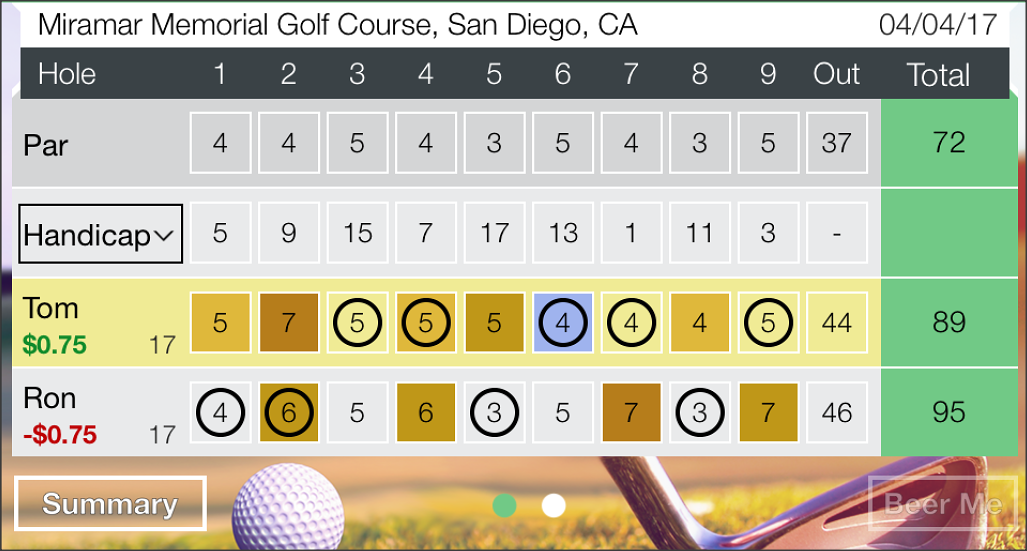
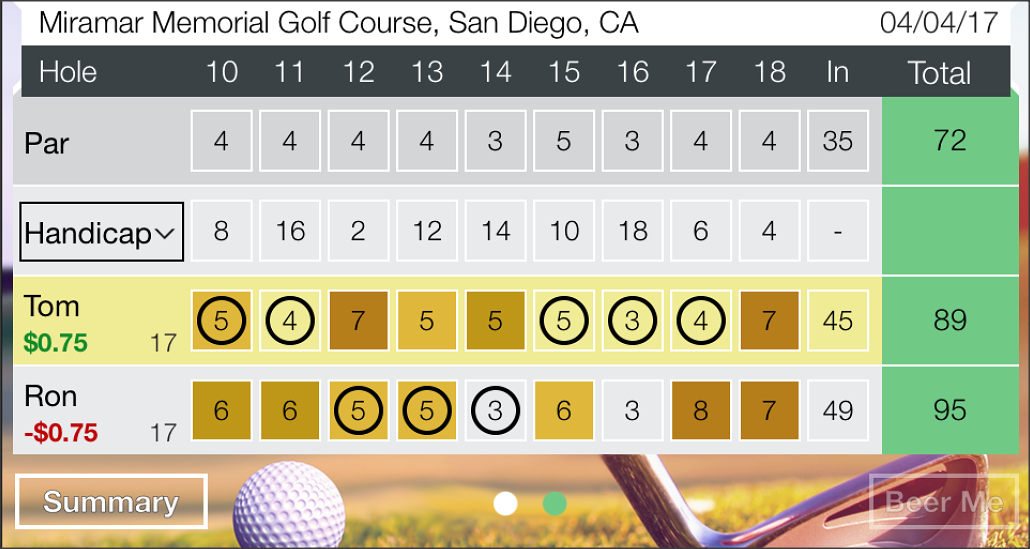
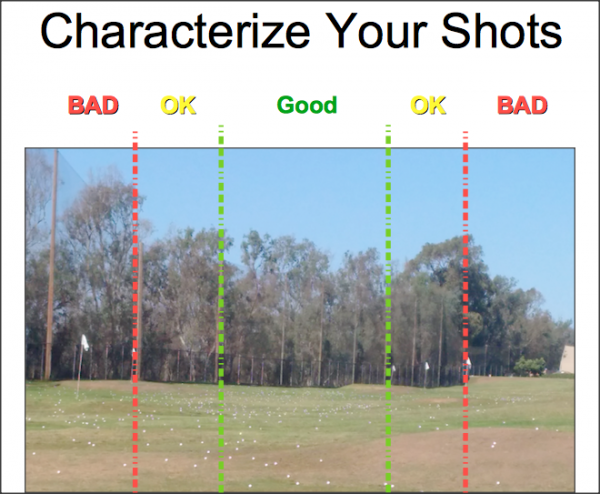
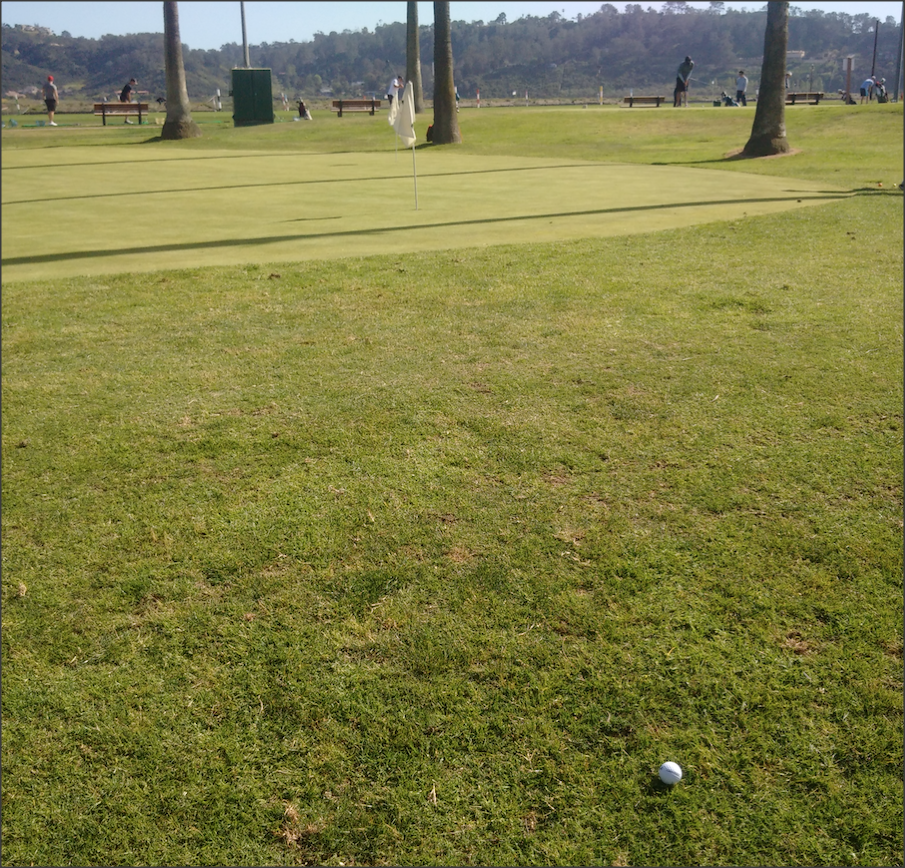
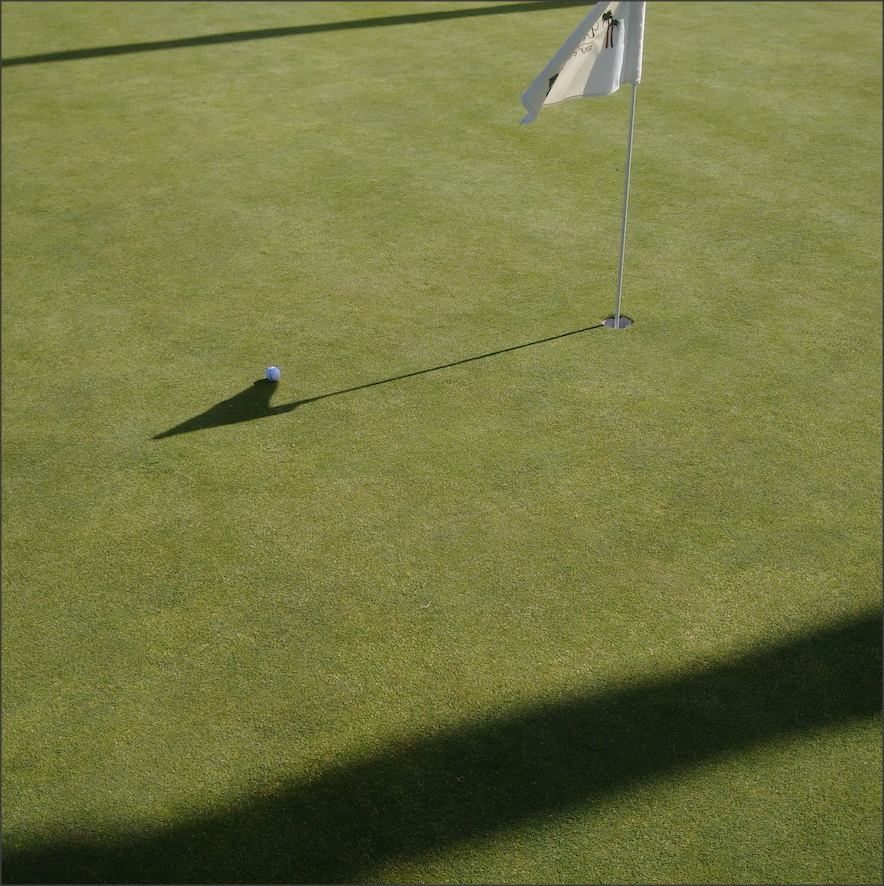
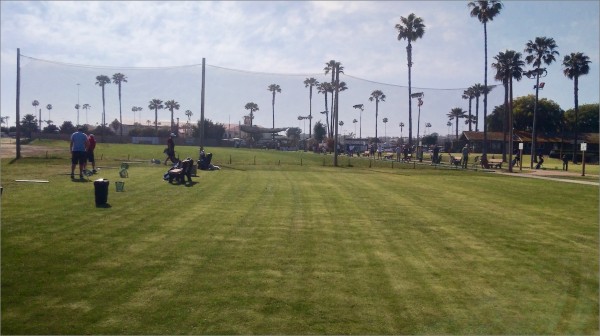
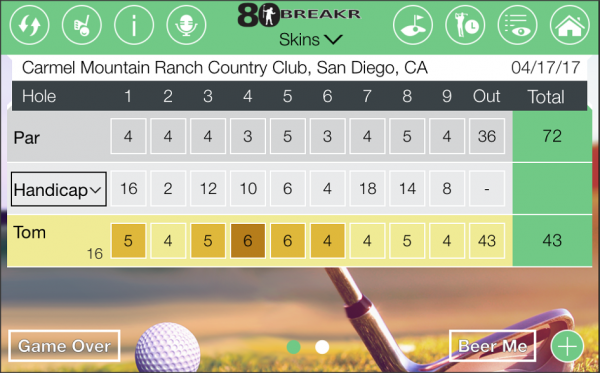
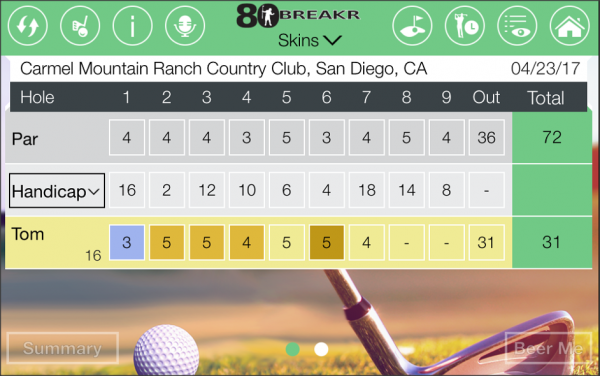















ooffa
Jul 2, 2017 at 4:23 pm
Everything in your post is wrong.
Jack
Jun 30, 2017 at 10:01 am
Playing on a simulator with movable platform and rough and a cheap sand bunker doesn’t really help though and that’s even a step bone this. It’s still too easy.
T
Jun 29, 2017 at 3:07 am
As a teacher, I get asked this all the time: “How does beating balls on a flat range help me when I get out to a real course with slopes and hills and I have to hit those shots but I have no idea how to?”
Yes. The only real way to practice those full swing shots from tricky sloped lies, also with tricky thick lies on a slope, is go out there and practice those on the course. Until you conquer those tricky shots, it’s hard to break 80, unless you can find the fairway with your drive 9 out of 10 times on to safe, relatively flat areas on the fairway.
Either that, or, you must get your arm and hand strengths up. Be ready to brace for hard hits and still be able to keep the face square. That’s more important than just going through the bag. How hard can you grip the club and how hard can you beat the ball with the shortest swings and still hit it really square and with enough speed? Henry Cotton would have told you it’s more important to beat the tyre and learn to hang onto the club that hard and develop strength before you start to beat balls meaninglessly. Most people can’t control their clubhead because they’re too weak to hold on through the tough impacts.
Denny Jones
Jun 28, 2017 at 3:29 pm
Another nice way to practice if the putting and or chipping green are in close proximity. Several courses I play have two separate greens, one for putting and another for chipping. This approach would not be practical at theses courses.
I was interested but found that this is “click-bait” for iOS.
Tom
Jun 28, 2017 at 2:53 pm
I try to do the best I can with the technique that’s burned into my neuro-muscular system for the last few decades. I’m not talking about taking a change in my swing from the range to the course in a few hours, just a mental tune-up to help me better face the on-course challenge. YMMV.
Mat
Jun 28, 2017 at 2:03 pm
I found this to be an interesting read and I am do something similar in my practice sessions.
I would be very interested in knowing how you created your app as I have a similar Idea that I have been toying with for a while that makes practice fun and challenging.
Regards.
Edge of Lean
Jun 28, 2017 at 1:08 pm
Retired IndE here. Agree, this is logical advice, and very practical and useful. Good article. Why so many haters?
Daniel
Jun 28, 2017 at 12:00 pm
Good concept for sure. The best practice then is to play a round or 9 holes as if it’s a real comp game? There’s a time and place for practicing your swing and other techniques at the range and practice facilities. Only one place to practice golf… the golf course.
The dude
Jun 28, 2017 at 10:36 am
Bingo…
Radim Pavlicek
Jun 28, 2017 at 2:07 am
Nice read. I downloaded the app from iTunes Store and will try it.
Speedy
Jun 27, 2017 at 6:14 pm
Basics and good tempo, that’s all you need.
Adam
Jun 27, 2017 at 5:53 pm
I’ve been practicing this way after my old swing coach suggested it maybe 12 years ago. Not every time, as there are certainly practice sessions where I’ll work on one thing/club exhaustively.
When “game practicing”, I’m not as thorough as you are, but I will go through holes 1-18 and hit every shot that I would outside of putts and bunkers. (Shot from the rough are “cheated”, as well)
Funny enough, I do this routinely at Torrey and use basically the same lines that you illustrated in the downrange shot in the article.
Strongly recommend this method as one for the last practice day before a tournament/outing/serious round. At that point in time, you want to get your mind acclimated to playing golf, not fixing your swing.
Bishop
Jun 27, 2017 at 5:08 pm
This is a great suggestion! I actually already use Random Practice, to be able to better “Gamify” while on the range. However, the addition of keeping score though writing my shots, and then the implementation of using the chipping and putting green, as well as the walk to and from would really help further.
Thanks!